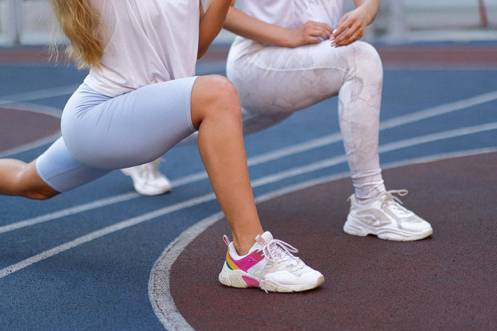Bulging veins on the legs are often normal, but they can be abnormal depending on the structure. You can differentiate between normal and abnormal veins by carefully examining the pattern. You need to examine your leg to see if the bulging veins are linear or zig zag.
A normal vein appears prominent when you exercise and perform cardio activities a lot. These veins have a straight pattern. On the contrary, if the vein has a lumpy structure and takes different directions, then it is most likely a varicose or abnormal vein.
These veins are deeper and but can be flexible. That is why they expand and grow more visible. Varicose veins could cause problems without timely treatment. These abnormal veins lead to some serious complications and infections. Furthermore, you might also experience swelling and skin irritation. In this article, we will discuss such bulging veins and how they occur.

(Source)
What are Varicose Veins?
Varicose veins are when the veins in your limbs appear to be bulging out of your skin. These veins are highly prominent with a twisting structure. These abnormal veins are clusters of swollen blood vessels. From the skin, they appear to be blue and purple.
How you Develop Bulging Veins on the Legs?
To understand the development of varicose veins, we need to consider how normal veins work. Veins help transport the blood from different parts of the body to the heart. As the circulation moves against gravity, the veins need adequate pressure to carry the blood forward.
Veins include three layers based on the function. The middle layer creates a thrust when we move. This pumps the blood forward. Furthermore, there are valves at the end and start of the vein. They control the direction and movement of blood while preventing backward flow.
In abnormal conditions, the valves are unable to perform these functions because of different reasons. Consequently, the blood doesn’t move forward and begins accumulating inside the same vein. Then, the vein starts to stretch, creating pressure. Although the condition isn’t severe initially, you might encounter various complications as blood continuously pools inside a vein.
Five Stages of Bulging Veins on Legs
Here are the five stages of Bulgy veins:
1. Normal Vein
Normal veins are not usually visible from the skin, especially when there is a layer of fat between the skin and the muscles. Whether the vein is deeper or near the surface, you won’t feel it bulging out of the skin unless you have a muscular body. If you work out a lot and have an active routine, normal veins might become more prominent. Undoubtedly, this is a normal condition, and you won’t need any treatment for that.
2. Development of Spider Veins
Tiny veins around the superficial veins are likely to develop first. These veins are similar to varicose veins, but their web-shaped structure makes them more prominent. Spider veins are the initial signs that you might develop before varicose veins. When the blood circulation is inefficient in a part of your body, such as the leg, the pressure starts to lead to severe conditions.
3. Venous Nodes or Varicose Veins
Once you develop varicose veins, you will start to experience throbbing, itching, and swelling in your leg. Varicose veins can be irritating and lead to numerous complications such as bleeding and blood clotting. You may also develop sores that can lead to a skin infection. It is essential to visit a vein specialist at your earliest, and delays might eventually lead to life-threatening conditions.
4. Edema
When varicose veins turn into Edema, you will start to sense tiredness, heaviness, and swelling in your leg, especially after completing long tasks sitting or standing in the same position. People with excessive weight, exposure to heat, or reduction in physical activities are prone to develop this condition. You may develop Edema if the blood from varicose veins starts leaking inside the surrounding tissues. Edema is a medical condition that requires instant medical help.

(Source)
5. Varicose Eczema
Varicose Eczema is a type of skin disorder. When the varicose vein infection starts to affect your skin, causing severe pain, it leads to varicose eczema. Below, you will find some symptoms of this condition:
- Swelling, especially during the night due to less activity.
- Swollen, red, and painful skin. You will experience severe pain.
- The skin over the varicose veins will become more itchy, dry, and irritated.
- Aching and heaviness on your legs when you stand for long periods.
Veins transfer deoxygenated blood back to the heart. Nonetheless, when you develop varicose veins, the blood fails to move forward, accumulating in the same position. While these veins include iron deposits, it irritates the skin. That is how it can grow more severe.
Conclusion
After recognizing the development of varicose veins, you need to visit a vein specialist before any complications. On your initial visit, the specialist will diagnose your leg with the ultrasound screening test.
If you want to consult with a professional vein specialist for diagnosis and effective treatment of bulging leg veins, contact vascular specialist Dr. Norman Chideckel at 212-993-6133 and schedule an appointment right away.


